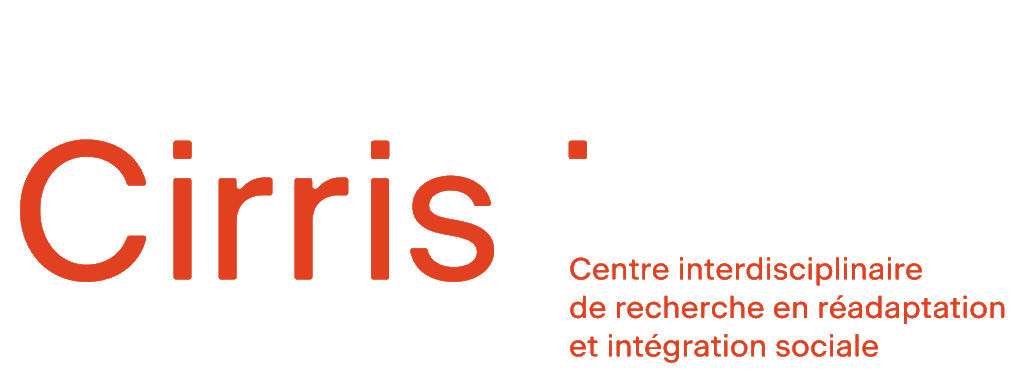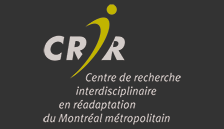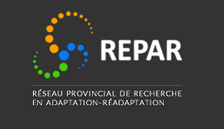How do you find the right media to ensure that the results are communicated and easily accessible to different stakeholders?
Jacqueline Roberge-Dao, PhD candidate, McGill University
Learn how to identify the right communication channels to reach the target audience of your knowledge transfer efforts and what means to use to get and keep their attention.
Subtitles available
LSQ Version - Quebec sign language
References
Text content
How do we find the right media to ensure that the results are communicated and easily accessible to different stakeholders? To answer this question, we will be talking about three main things that you may may want to consider when planning how to communicate results to different stakeholders. The audience, the message and the channel. Know your audience. What are the most important characteristics of your target audience when it comes to sharing knowledge with them? Some factors to consider include their education level, their area of expertise, their roles and level of influence, their values and priorities, and where, how and when they prefer to access information. When it comes to the general public, there is a wide diversity in age, gender, culture, socioeconomic status, interests, and opinions. Using simple analogies and metaphors, visuals and stories can help you deliver your message efficiently. Address the question: ‘So what early on to keep your audience interested and engaged?’ Similarly, address the key issues with broad reach and most impact first, followed by more detailed points. When it comes to policy makers, understand, who are you targeting specifically, what is their primary role and responsibility, what is their content expertise, and finally, what type of evidence is important to them? Frame the problem and the solution with locally relevant data. Policymakers have an interest in real world stories and in cost effectiveness, if applicable, the message for your audience. People will retain information that resonates with them, so it is important to frame your message in terms that are accessible, relatable, and meaningful for your audience. Here are some tips to consider. Prioritize a few key messages and keep the message simple and concise. Avoid jargon, technical terms, and acronyms. Graphics, visuals, and direct quotes are effective means. Frame messages in ways that evoke strong emotion, demonstrate usefulness, draw great interests such as surprising or entertaining findings, and are positive. Be careful not to overstate your findings because the public is sensitive to exaggeration. Select a credible and trusted spokesperson to deliver your message and include them in your planning. The Channel. What medium can we use to communicate our findings effectively? Researchers tend to value and focus on traditional products such as Journal articles and conference presentations, which are more passive forms of dissemination. While important, there is value in going beyond the traditional academic channels to achieve broader uptake of our findings. Here are some examples of these alternative channels of communication. Brief summaries of research can be useful for all audiences. These are succinct onepagers with key points, which can be an effective way of bringing research to the attention of stakeholders as they can be read in a very short amount of time. We recommend enhancing your document with easy to understand data visualizations and infographics. It’s also important to include expected benefits from what is being described. Creating a short podcast or video related to your project is a great way of engaging your audience. You can then post it to YouTube and share the link via other social media platforms. Twitter is very popular for quick dissemination of publications and findings and for sharing opinions on a topic of interest. You can tag key actors to increase visibility and use hashtags to create or add your posts to a classification system. LinkedIn and Facebook are a bit different in how people use them because they’re used as networking sites. LinkedIn is designed for the business community and has an older demographic, while Facebook is one of the most diverse social channels with people from all demographics, people often use Facebook for bringing together a group. You may be interested in approaching traditional media to convey your results, especially since they have wide reach and may influence public opinion. Determine the most relevant media source for your knowledge translation strategy. Is it print, radio, television or documentary? These are all very different in reach, purpose and format, so I highly recommend that you get in touch with the communications officer at your institution who can help you in developing and disseminating a Press release. For example, you can contact your Knowledge mobilization Coordinator. If you are approached for an interview, here are some aspects to take note of, including the main audience, the format and length of the interview, the line of questioning, and any deadlines. You may also want to consider getting media training. Meetings, workshops and seminaries can allow you to communicate your research and interact with your audience in real time. This can take on a range of formats either virtually or in person, from short 15 minutes lunch sessions to longer, multisession trainings. It is best to select one spokesperson and to align your learning objectives with the content and activities. Finally, arts based activities such as the visual arts, the performing arts, creative writing and multimedia, including video and photography are used to communicate research with the goal of enabling dialogue, awareness, engagement and advocacy, especially among community or non research stakeholders. As an example, Dr. Nyla Kulman and her team launched Peace of Mind, a participatory research creation project to shed light through music and movement on the lived experiences of people with Parkinson’s disease and dementia. They ran artsbased workshops, filmed two performances for online dissemination, and are hosting webinars to share the results. We hope that you found this overview helpful and invite you to take a look at our references for more details information.




